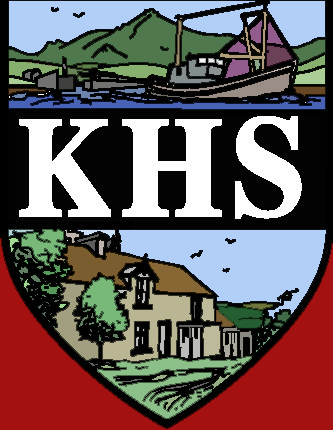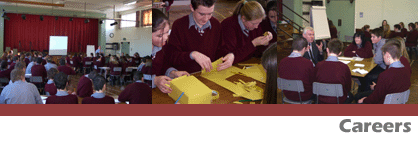

Home | About Us | History | Prospectus | Departments | Events and Societies |
||
Location | Useful Links | Search | Contact Us |
English
Maths
Science
History
R.E
Geography
ICT
Languages
Home Economics
Child Development
Technology
Business Studies
Art and Design
Music
Physical Education
Careers
LSC
Road Traffic Studies
PSHE
Library

S McConnell and Sons
It certainly was not location, location ,location that led to the success of this family firm. It is situated in a magnificent setting at the foot of the Mournes in Co. Down.
Traditionally the firm worked with Mourne granite using their own quarry. Nowadays they along with other granite companies in the area import granite from countries such as India, Spain and South Africa.
The company had the good traditional skills of stone working and did the usual work such as stone facing of buildings, headstones and tasty stone work about new buildings. This company had their sights set on other type of work different from the granite competitors in the area. They liked a challenge. In 1997 they won the United Kingdom National Stone Award with the restoration of St. Matthew’s Church, Belfast.
The decision to restore the Albert Memorial clock was passed in 1998. It was obvious that the building was in a poor state. The stone was dirty, worn and shabby. The major challenge was the restoration of the stonework. The stone originally used in the building was sandstone, Scrabo sandstone and granite from the Mournes. The statue of Albert was in Portland stone.
In this project the greater amount of the work was in the hands of the men from Mourne. The working stone skills which were past down from generation to generation was going to be put to the test under the senior mason of Leslie McConnell and his team. Gargoyles, pinnacles and gablets had to be replaced and many features had to be redesigned due to weathering. It became the biggest stone restoration project in Ireland. The manager Norman McKibben reckoned that it would take a stonemason working 13 years to do the restoration work.
At this stage the traditional skills met 21st century technology. The McConnells departed from hand tools to a computer-generated machine. This Italian machine could cut stone efficiently. It could measure and cut three-dimensional images to a high degree of detail and accuracy. Now a stone mason makes a template (a replica stone) and the machine scans it. Along with the machine came qualified computer staff. This machine revolutionised their out put.
It was extremely important in repetitive ornamental work i.e. cornices. The system combined the ingenuity of technology, the talent of the artist and the high-class skill of the stone craftsman. The machine did the laborious work freeing the masons to add the finishing touches.
This job helped to establish the firm throughout the United Kingdom. Stone was imported from Cornwall for the Diana Memorial which was opened in July 2004.
Here is a small firm in the heart of the Mourne Mountains who have now become world famous. The meeting of good skills and investment in modern technology has paid off.
Next step could be America. Their reputation for high calibre workmanship in a reasonable time is due to the far seeing of the firm. To stay with what they had would have left this firm unknown in the Mourne Mountains but modern technology and investing in people with the IT skills have made this a world class firm.
Copyright © Kilkeel High School 2005